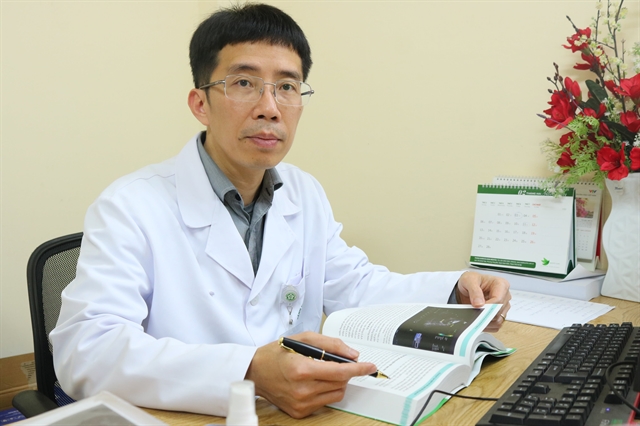 Opinion
Opinion

 |
| Nguyễn Trường Giang, head of Việt Nam Minerals Department. |
Nguyễn Trường Giang, head of Việt Nam Minerals Department under the Ministry of Natural Resources and Environment, spoke to Tài nguyên & Môi trường (Natural Resources & Environment) online newspaper about the urgency of compiling the Law on Geology and Minerals as well as the new points in the draft law.
How do you evaluate the implementation of the 2010 Law on Minerals?
The 2010 Law on Minerals, which was promulgated and took effect in 2010, is believed to be an important milestone for the State management of minerals. After more than a decade of the law’s implementation, the system of legal documents on minerals has basically been completed, contributing to enhancing the effectiveness of State management and developing the mining industry. The survey and assessment of minerals have achieved many remarkable results, increasing national mineral reserves. The mining industry contributes significantly to important economic sectors such as oil and gas, coal, cement, iron, steel, chemicals and aluminium.
However, there are still inadequacies and shortcomings. These can be found in mechanisms and policies of mineral planning, protection of unexploited minerals and the interests of the locality and people where minerals are mined.
Although a number of new laws have been promulgated such as the Law on Planning, several laws have been amended including the Law on Environment Protection, the Law on Investment and the Law on Minerals have not yet been adjusted to match other laws. It is necessary to amend and supplement the 2010 Law on Minerals. (After the amendment, the revised 2010 Law on Minerals will be called the Law on Geology and Minerals following the Resolution No.126/NQ-CP, signed on September 27, 2022.)
What are the department’s suggestions to remove shortcomings in the 2010 Law on Minerals and develop the Law on Geology and Minerals?
Resolution No.02-NQ/TW of the Politburo on orientations of the Strategy for minerals and mining industry by 2020, a vision towards 2030, was issued in 2010 at the same time as the 2010 Mineral Law was promulgated. The draft Law on Geology and Minerals has been compiled after the Politburo issued (on February, 2022) Resolution No. 10-NQ/TW on strategic orientations of geology, minerals and mining industry by 2030, a vision towards 2045. This is a very important political basis and the orientation for amending and supplementing the 2010 Law on Minerals.
One of the important tasks in the formulation of the Law on Geology and Minerals is to fully institutionalise the views of Resolution No. 10-NQ/TW. Geological and mineral resources are important resources for the socio-economic development of the country and a long-term reserve of the country that need to be fully planned and surveyed; centrally managed; and sustainably used to meet immediate and long-term demands.
The provisions of the Law on Geology and Minerals must be consistent with the Constitution and synchronous with relevant laws; easy to understand and highly feasible. They must promote investment in parallel with strengthening the efficiency of State management of geological and mineral resources, associated with the requirements of simplifying administrative procedures. They also must inherit the provisions of the 2010 Law on Minerals; abolish inadequate regulations; amend current regulations to fit with reality and requirements in State management of geological and mineral resources in the new situation.
They will focus on promoting decentralisation of powers for local governments so that localities can take initiative in socio-economic development, associated with assigned responsibilities and authority; setting up tools to control power, monitor implementation; handling the shortcomings in the field of geology and minerals.
At the same time, they will also clearly define the responsibilities of organisations and individuals that exploit minerals, the reinvestment of revenues from mineral extraction to develop education, health care, infrastructure and ensure social security for the locality and people where the minerals are exploited. They will complete regulations on auction of mining rights; grant licences for mining activities for minerals that are used as common building materials in accordance with reality, especially granting licences for infrastructure works and national key works.
In addition, they will improve the management mechanism according to market principles; strictly inspect and control mining activities to ensure fairness, publicity, transparency to avoid wastefulness of mineral resources.
What are new contents in the draft Law on Geology and Minerals to fix the 2010 Law on Minerals’ shortcomings?
The department has proposed new contents in the draft law, including policies and economic tools on geology and minerals; responsibilities of the Fatherland Front, socio-political organisations and community in the protection of mineral resources; information system, database and reporting policies on geology and minerals; regulations on exploiting minerals as common building materials to serve national key works and projects.
Specifically, the department submitted to supplement regulations for centralised management of geology and minerals, including geological and mineral information and data; regulations on investment capital sources for geological and mineral basic surveys and on State management of geological baseline surveys.
The department suggested to add a chapter on exploitation of mineral water and natural hot water. Mineral water and natural hot water are liquid and renewable minerals. The exploitation is simple, not affecting the environment much and not occupying many land areas. Therefore, it should issue separate regulations for the type of minerals.
The department also recommended to build a new chapter on basic geological survey, which contains specific provisions on basic survey of geological heritage and geo-park; geological hazards, environmental geology; engineering geology, urban geology; and other geological conditions.
The new chapter will complete regulations on storage and use of geological and mineral information, responsibilities of the State in basic surveys of geology and minerals; rights and obligations of organisations and individuals engaged in geological basic survey activities. — VNS




